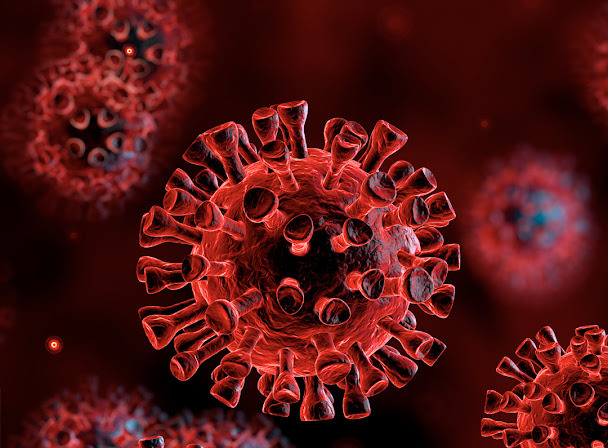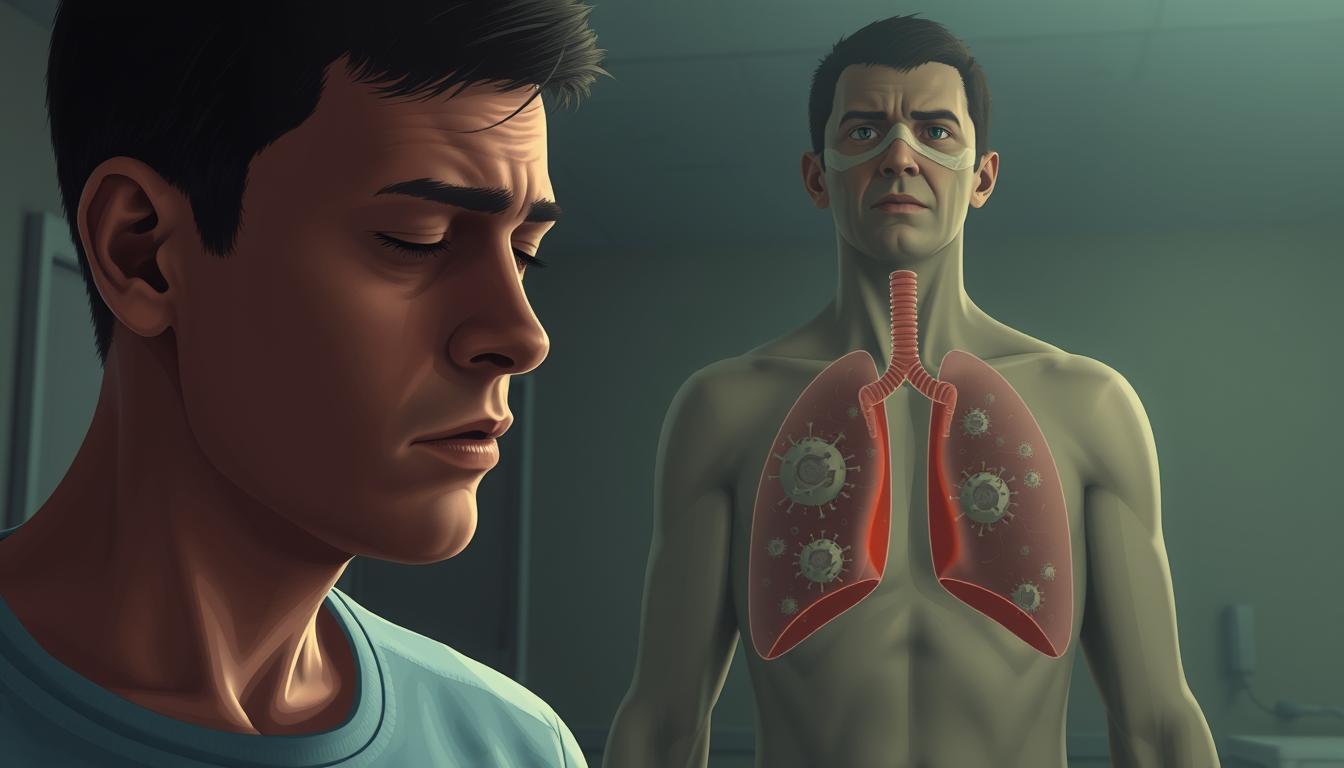
Did you know over 80% of COVID-19 cases are mild? This shows how the pandemic affects people and communities differently. We're learning about the big changes from the novel coronavirus SARS-CoV-2. This study looks at how COVID-19 has changed our lives and what we can do for the future.
We're getting better at understanding health and economic changes from the pandemic. This helps us build stronger communities. Our experiences teach us the importance of always adapting and improving as we move forward.
Key Takeaways
- Over 80% of COVID-19 cases are considered mild, with 14% severe and 5% critical.
- The overall case fatality rate varied significantly by country, with Italy at 13.3% compared to South Korea's 1.8%.
- Effective public health measures were observed in South Korea, contributing to its lower fatality rate.
- The pandemic has led to an exponential increase in identified emerging infectious disease events.
- The World Health Organization estimates the economic impact of a moderate to severe pandemic could reach $500 billion.
- SARS-CoV-2 is mainly spread through respiratory droplets, showing the need for good prevention.
Introduction to the Corona Virus Pandemic
The COVID-19 outbreak is a major turning point in our world's history. It has brought us face-to-face with a massive health crisis that started in late 2019. Learning about where this pandemic came from and how it has grown helps us prepare for future global health emergencies.
Overview of COVID-19 and its Origins
COVID-19 comes from a new coronavirus called SARS-CoV-2. It is very similar to viruses found in bats. Studies show SARS-CoV-2 is 96% similar to two bat coronaviruses.
Pangolins were also found to be a possible middle host, with a 91% genome similarity. The Huanan Seafood Market in Wuhan was the first place where the virus was found. It was linked to many early cases.
Key Dates in the Emergence of SARS-CoV-2
The timeline of the pandemic is filled with important moments. These moments have shaped how we fight COVID-19. Key dates include:
| Date | Event |
|---|---|
| December 2019 | First reports of pneumonia cases in Wuhan, China. |
| January 7, 2020 | SARS-CoV-2 is identified as the cause of the outbreak. |
| January 30, 2020 | The World Health Organization declares a global health emergency. |
| March 11, 2020 | The COVID-19 outbreak is officially declared a pandemic. |
This timeline shows we need a global plan to fight SARS-CoV-2. Knowing where COVID-19 started and these key dates is key for good health strategies during emergencies.
Physical Health Consequences of COVID-19

The effects of COVID-19 go beyond the initial illness. We see that some groups face higher risks. The long-term effects and recovery challenges are complex and evolving.
Common Symptoms and Affected Populations
The symptoms of coronavirus vary. Common symptoms include:
- Fever
- Cough
- Difficulty breathing
- Fatigue
- Muscle aches
- Sore throat
- Headache
- Loss of smell or taste
- Conjunctivitis
The elderly and those with health issues are at higher risk. About one-third of those hospitalized with COVID-19 face long-term symptoms like fatigue and muscle weakness. These symptoms can last weeks or months after the initial illness.
Long-term Physical Effects and Recovery Challenges
Research shows long-term effects of COVID-19. Many face ongoing challenges, including:
| Long-term Effect | Description |
|---|---|
| Chronic fatigue syndrome | Severe, persistent fatigue not improved by rest. |
| Organ damage | Increased risk of conditions like myocarditis and chronic lung damage. |
| Neurological issues | Common symptoms include brain fog and dizziness. |
| Reduced physical activity | Overall activity levels decreased globally, leading to increased sedentary behavior. |
Over 200 symptoms have been linked to long COVID. These can last months or years. Vaccination may help reduce these effects, showing the need for health measures during the pandemic.
Oral Health Impacts Due to the Corona Virus

The COVID-19 pandemic has greatly affected our oral health. Studies show a link between COVID-19 and oral health problems. Issues like dry mouth, gum problems, and tooth decay are more common in those infected.
It's important to understand these effects to better protect our teeth during and after the pandemic.
Link between COVID-19 Infection and Oral Health Issues
Stress from COVID-19 has led to more teeth grinding. This causes cracked teeth and enamel wear. Jaw pain and toothaches are also common.
Dry mouth, caused by masks and breathing through the mouth, is a big problem. It leads to bad breath, more bacteria, and a higher risk of cavities and infections.
There's also a strong link between gum disease and severe COVID-19 outcomes. People with gum disease are nine times more likely to die and need more medical care. Gum tissue damage can cause oral ulcers.
Access to Dental Care during the Pandemic
Dental care access has been severely impacted by the pandemic. Emergency dental visits have increased, but routine care has dropped by 66% in Brazil and 62% in the US. Many are worried about health risks.
Some people have tried to take better care of their teeth, but many vulnerable groups have neglected their dental care. There's been a rise in sugar intake in some areas, which is bad for teeth. Teledentistry has become a popular option, with many patients enjoying the convenience of remote consultations.
Mental Health Effects of the COVID-19 Outbreak

The COVID-19 outbreak has deeply affected our mental health, leading to a crisis many face. Anxiety and stress soared as people dealt with uncertainty and isolation. Now, finding mental well-being is more important than ever.
Increased Levels of Anxiety and Stress
The pandemic caused a huge spike in anxiety and stress. Data shows anxiety and depression symptoms hit 40% of adults in early 2021. This reflects a big response to the crisis.
Many factors led to this increase, like health worries, financial fears, and changes in daily life. About 90% of U.S. adults see a mental health crisis, showing the need to tackle these issues.
Also, mental health stigma worsened these problems. People, like those of Asian descent and healthcare workers, faced more discrimination. This increased their stress, making support and understanding key.
Long-term Psychological Impacts of Isolation
The effects of isolation on our minds are lasting. Studies found hopelessness and sadness rose, hitting 57% in adolescent females in 2021. School and facility closures made loneliness and depression worse.
New solutions like telehealth services helped. By 2021, 40% of mental health visits were online. Yet, unhealthy coping like substance misuse and overeating became common.
As we look at the pandemic's mental health effects, we see the need for more support and community. Understanding these issues helps us support those affected by this difficult time.
Global Economic Implications of the Corona Virus

The Corona Virus pandemic has had a huge impact on the economy. It has changed how people work and shop worldwide. Businesses had to quickly adjust to a new, uncertain world.
Many jobs were lost, and companies struggled to keep going. Lockdowns and restrictions made things even harder.
Impact on Employment and Workspaces
Unemployment rates skyrocketed during the pandemic. In the U.S., the jobless rate hit 4.4% in March 2020. This was the highest level in over three years.
Temporary unemployment hit about 70% of countries, mainly those with only primary education. Women, youth, and self-employed people saw big drops in income. This made existing gaps even wider.
Small businesses and informal jobs were hit the hardest. Many could not last more than 50 days without help.
Changes in Consumer Behavior and Spending
Consumer habits changed a lot during the pandemic. Over 50% of households in many places found it hard to buy basic things. This led to big changes in how people spent money.
Online shopping became more popular as people got used to new ways of shopping. But, spending on non-essential items dropped a lot. The global economy shrunk by 4.4% in 2020.
The service sector, like tourism and hospitality, saw huge drops. This was because fewer people were out and about.
| Parameter | Impact |
|---|---|
| Global Economy Contraction | 4.4% in 2020 (IMF) |
| U.S. Unemployment Rate | 4.4% in March 2020 |
| Global Job Loss | 400 million full-time job equivalents lost in 2020 |
| Household Consumption | More than 50% could not sustain basic needs for over 3 months |
| Corporate Expenses Coverage | Average for large firms: 65 days; small firms: 50 days |
| Global Trade Decline | Projected 12.9% to 31.9% fall in 2020 (WTO) |
| Construction Sector Impact | More affected by the Russian invasion of Ukraine than the pandemic |
Public Health Responses to the COVID-19 Pandemic

When COVID-19 hit, health experts worldwide took big steps to fight it. They used lockdowns and education campaigns to slow the virus. We've learned how well these efforts worked by seeing how different places did it.
Measures Implemented to Flatten the Curve
Travel limits and airport checks were key to stop the virus from spreading. Places with lots of people, like cities and nursing homes, focused on keeping people apart. China, for example, locked down cities and built special hospitals to care for patients.
Effectiveness of Social Distancing Guidelines
Social distancing became a main strategy. Countries like Italy and Iran closed schools and used online doctor visits. Events like Mardi Gras led to new rules for big gatherings and staying home.
They also worked on finding hidden cases and tested more people. Some places, like South Korea, used technology to track cases. Others focused on teaching people and using online health services. These different ways of fighting the virus teach us important lessons for the future.
Development of the Corona Virus Vaccine
The COVID-19 vaccine's creation is a huge win for science. It shows how teamwork and new ideas can lead to fast progress. Scientists quickly moved from starting research to testing vaccines widely, changing how we see vaccines.
They used mRNA technology to make vaccines fast. This helped get vaccines approved quickly, helping fight the pandemic.
Overview of Vaccine Research and Trials
In 2005, Katalin Kariko and Drew Weissman discovered mRNA's power. This was key for mRNA vaccine research. By 2020, the FDA approved Pfizer-BioNTech and Moderna vaccines for emergency use.
In 2021, these vaccines got more approvals for younger people. Clinical trials showed these vaccines were safe and worked well against severe illness.
They triggered the body's immune system, making antibodies and activating immune cells. This is how we build immunity. Even though some serious side effects were seen, most people started to trust the vaccines.
Vaccination Rates and Public Perception
Watching vaccination rates was important to see how people felt about the vaccines. Some people were hesitant, even though the vaccines worked well in tests. Efforts to educate the public helped improve how people felt about vaccines.
New vaccines, like Novavax, gave more options for different groups. This helped more people get vaccinated. Now, we need to keep up with new virus strains and make vaccines for them. We aim to make more people get vaccinated and overcome doubts, helping us fight COVID-19 together.
Current Corona Virus Statistics and Trends
It's important to keep an eye on COVID-19 stats to grasp the pandemic's impact. Reports show steady data on cases, deaths, and recoveries across states. This data is key to our health crisis management. The rise of virus variants adds complexity, affecting how easily the virus spreads and vaccine effectiveness.
Monitoring Case Rates and Mortality Statistics
Health authorities track COVID-19 cases through tests. The latest numbers highlight the wide reach of the outbreak:
| State | Total Cases | Total Deaths | Total Recoveries | Cases per 1M Population | Deaths per 1M Population |
|---|---|---|---|---|---|
| United States | 111,820,082 | 1,219,487 | 109,814,428 | 337,912 | 3,685 |
| California | 12,711,918 | 112,443 | 12,579,483 | 321,721 | 2,846 |
| Texas | 9,190,299 | 104,793 | 9,071,380 | 316,952 | 3,614 |
| Florida | 8,048,191 | 95,206 | 7,937,032 | 374,722 | 4,433 |
| New York | 7,587,861 | 83,374 | 7,498,921 | 390,050 | 4,286 |
Tracing Virus Variants and Outbreak Dynamics
Virus variants are a big challenge in fighting the outbreak. Surveillance systems are always being updated. The WHO dashboard gives us quick info on variant spread. These changes can alter how outbreaks unfold, making public health responses need to be flexible.
Grasping outbreak dynamics helps us make smart decisions and focus our efforts. This is vital for controlling the virus and protecting public health.
Conclusion
The COVID-19 pandemic has taught us a lot about health, economy, and mental health. We've seen over 1.2 million cases and nearly 68,000 deaths by early April 2020. These numbers remind us of our weaknesses.
Learning from these impacts, we know we need strong health systems and global teamwork. This is key for future readiness.
This crisis showed us how people react differently to the virus. Many knew breathing problems were a big sign. This shows how important clear messages are.
But we must keep learning to avoid future disasters. Education is key to staying safe.
We must stay alert and keep improving our plans. Research on treatments like chloroquine and remdesivir is vital. Our strength in facing these challenges will help us fight future outbreaks.
FAQs
What are the common symptoms of COVID-19?
Common symptoms include fever, cough, and trouble breathing. Fatigue and loss of taste or smell are also common. In severe cases, it can lead to acute respiratory distress syndrome.
How does the novel coronavirus spread?
The virus spreads mainly through respiratory droplets when someone talks, breathes, or coughs. It can also spread by touching contaminated surfaces and then touching your face.
What measures can we take to prevent COVID-19 infection?
To prevent infection, practice social distancing and wear masks. Wash your hands often and avoid crowded places. Stay home if you're feeling unwell.
What is "long COVID" and its symptoms?
"Long COVID" is when symptoms last weeks or months after the initial infection. Symptoms include chronic fatigue, joint pain, and organ damage. It's important to get ongoing medical evaluation.
How has the COVID-19 pandemic affected mental health?
The pandemic has increased anxiety, stress, and depression. Lockdowns have led to isolation, causing long-term psychological effects. Mental health support is needed.
What are the economic implications of the pandemic?
The pandemic has caused job losses and changes in work environments. Many sectors have moved to remote work. Consumer behavior has changed, affecting traditional economic models.
How have public health authorities responded to the pandemic?
Authorities have used lockdowns, social distancing, and mask mandates to control the virus. It's important to evaluate these measures to improve future strategies.
What is the status of COVID-19 vaccine development?
The fast development of COVID-19 vaccines is a major medical achievement. Multiple vaccines are now available. It's vital to monitor vaccination rates and public attitudes to overcome vaccine hesitancy.
Why is monitoring COVID-19 statistics important?
Monitoring COVID-19 statistics is key for effective public health responses. It helps track case and mortality rates, and emerging variants. This information guides strategies to control the virus's spread.
sources :-
